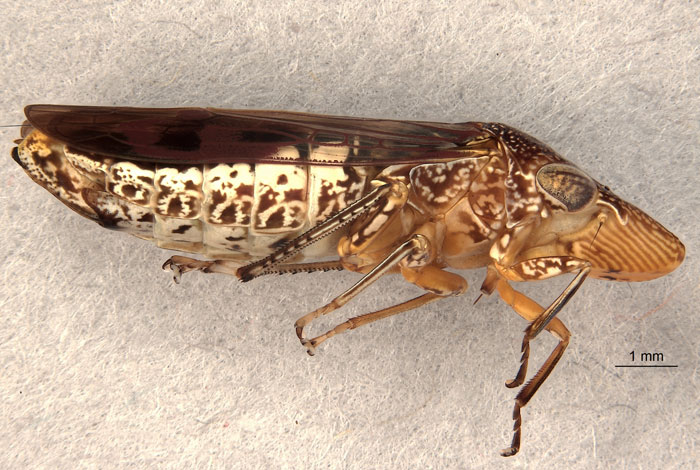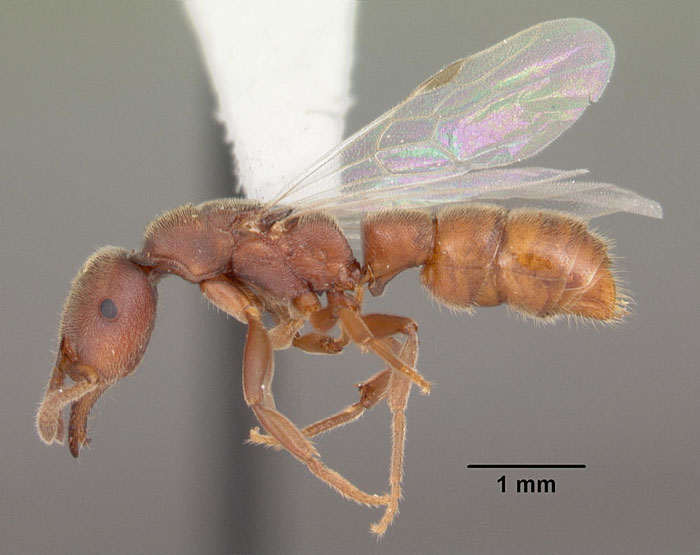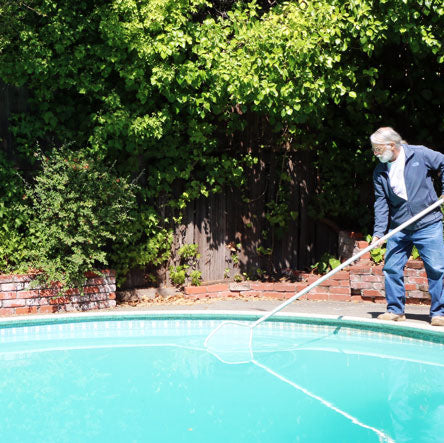(Repost): Original Post: https://baynature.org/article/those-bugs-swimming-pool-save-them-for-science/
Jere Schweikert, an entomologist at the California Academy of Sciences, was cleaning the pool in his backyard in Marin County when the opportunity occurred to him. “I just got this feeling that I was tossing a lot of good bugs over the fence,” he says. “For years I’ve seen bugs splattered on people’s car radiators and I’ve been wondering what they were. One day it just occurred to me to look at the insects I was cleaning out of my pool.”
Schweikert’s pool is well-placed at the edge of wild open space, where insects drift in like pollen from the nearby oak trees. Most of us are familiar with the sight of drowned yellow jackets, honeybees, and even the occasional dragonfly glinting in the summer sun, but it’s the smaller insects that interest Schweikert. “Most people don’t collect the really small stuff,” he says. “But that’s the interesting stuff. Pools tend to collect smaller flying insects that are blown in by the breeze.”
This “dust” as Schweikert calls it, looks like just that until you see it under a microscope. “Then it’s a whole new world,” he says.
Schweikert collected a big bag of drowned insects, and took it to the lab. The dizzying variety of insects pulled from his samples include 57 species of tiny parasitic wasps in the family Encyrtidae, ecologically important insects that are found virtually all over the world. Four hundred and eighty species of these wasps live in California, and Schweikert’s pool collected an amazing 12 percent of all the known species in the state, as well as 18 potentially undescribed species. And that’s one pool, in one corner of the state. Schweikert saw entomologist gold, and brought the find and an idea to scale it to his collaborators at the Academy of Sciences and UC Berkeley.

Entomologists in the field often collect flying insects using pan-traps, bright blue or yellow plates placed in a small pit in the ground. Insects, lured in by the bright colors, drown in the inch or two of water at the bottom. “It was going to happen sooner or later, that some entomologist was going to be swimming in a pool and realize that pools are basically giant pan traps,” says Jenna Florio, a research assistant at the Academy of Sciences who coordinates the citizen science Backyard Biodiversity Project.
And so, with Schweikert’s pool cleaning moment of insight, a citizen science project was born.
“The main inspiration for this project was the desire to engage people who are enthusiastic about science with the biodiversity that occurs in their own living environments,” says Neil Tsutsui, a Berkeley biologist who studies insect communication. Tsutsui and Brian Fisher, an entomology curator at the Academy of Sciences, started the California Pools Project (as part of the Backyard Biodiversity Project) last year and now hope to recruit 20 participants from throughout California. So far 12 have joined.
Fisher and Tsutsui are specifically looking for homeowners who have uncovered backyard swimming pools, and who can commit to skimming their pool once a month for a year. If a potential collaborator’s pool qualifies, they are mailed everything they need to begin collecting insects and shipping them back to the lab for identification.

Although the project has been running less than a year, it is already giving scientists a new perspective on insect biodiversity in California, with roughly 4,000 insects and arachnids recorded – from just 12 pools — so far. That figure includes over 300 ant specimens, which has been especially exciting for ant specialists Tsutsui and Fisher.
“There are lots of ants that are really mysterious, especially the subterranean ones that you very rarely or never see above ground, but we see these showing up in our pool samples in some cases because when they reproduce — when they produce new queens and new males — those individuals have wings and at that stage you can collect them,” Tsutsui says. “And so one of the surprises is that we see some of these really really rare ant species occurring very commonly in these pool samples.”
Among the rarest finds are several specimens of Stigmatomma ants, otherwise known as “dracula ants,” due to the workers’ habit of sucking the blood of their own larvae for sustenance (they do not kill the larvae in the process). Dracula ants are quite rare to find in nature because they are primarily subterranean and don’t venture out to forage very often. Before the pool project started up, only one winged specimen had ever been collected in the Bay Area. But now, thanks to Schweikert’s pool samples, there are upwards of 30-50 specimens recorded.

Although the project is still less than a year old, scientists hope that as more samples are accumulated year after year and from more locations they will be able to find out not only where different species of ants are living, but also to detect seasonal patterns in when they are reproducing (an event that happens only once a year), or when dispersing. “It’s a way of finding out information that hasn’t been easy for us to access before,” Tsutsui says.
Pools are also potentially a new way of identifying invasive species that might be showing up in California or that have extended their range to a new place in the state, such as the glassy-winged sharpshooter, which has been expanding its range from Mexico and poses a threat to the wine and citrus industry.
The main focus of Tsutsui’s research looks at the origin and evolution of the pheromones invasive Argentine ants use to communicate and thrive in California, but pool samples are also giving him a window into the distribution of native ants as Argentine ants continue to expand their range in the state. First introduced to North America from Argentina well over 100 years ago, Argentine ants have established vast colonies in California.
“We know from previous research that the impacts from Argentine ants on native ants are really dramatic,” Tsutsui says.
The Bay Area Ant Survey, a project Fisher created several years ago, helped lay the groundwork for the pool project. The ant survey encouraged participants to collect ants in the areas where they lived and send them back to the California Academy of Sciences, allowing Fisher to gather baseline data on the diversity and distribution of ants of all over the Bay Area.
“But the pool project is different because it will capture ants that are active even when human’s aren’t, such as subterranean ants and ants in their reproductive stage,” Florio says.

Florio sorts samples, identifies insects (insects that can’t be identified are uploaded to the iNaturalist website), and photographs particularly captivating specimens to share with participants along with their monthly updates. With the help of a dedicated team of volunteers, the project is slowly scaling up. Most volunteers arrive not knowing any insect orders, but with some training they can begin sorting samples, photographing, and even pinning specimens. “Everyone has their own skills that they excel in,” Florio says.
Mitch Miller, an Academy entomology volunteer and recent graduate of the University of Pittsburgh who has been fascinated with ants ever since a study-abroad trip to Panama brought him in contact with leafcutter ants, performs one of the most delicate tasks a pool project volunteer could have: ant pinning. But for Miller, it’s been a fun challenge. “I do art, so I think I have a steady hand from that,” he says.
Even if you don’t have a steady ant-pinning hand, or a pool, there are still many ways to get involved. Florio encourages people to record observations of backyard organisms and upload them to the Backyard Biodiversity Project website on iNaturalist, or to contact the Oakland Museum to request an “Antvasion” experiment kit, a study that is testing the widespread belief that natural spices can be used as effective repellants for ants.
Not only is the new push for Citizen Science in entomology helping scientists understand biodiversity in the state, it is breaking down the wall between researchers and the public. That, for Florio and her colleagues, is one of the most important goals of the project. “I grew up in a city, so I am interested in showing people that even in urban areas there is tons of biodiversity,” Florio says. “The majority of insects in the world haven’t even been named or described yet, and to find new species you don’t need to travel to faraway lands. All you need to do is look in your backyard.”
